- Home
- Ursula K. Le Guin
Words Are My Matter Page 6
Words Are My Matter Read online
Page 6
The Guardian, “The Week,” June 30, 2006
“We know our art, we do not minth
our wordth,” the Royal Jury said.
“A human noggin won’t convinth.
A thlab of thlate ith far more great,
cauthing the true aeththetic winth.
Off with hith head!” the Jury said.
“Off with hith head, and on with hith plinth!”
On Serious Literature
Published on my website, then in Ansible, then (without my permission and
extremely briefly) on boingboing, and then in Harper’s, all in 2007.
“Michael Chabon has spent considerable energy trying to drag the decaying corpse of genre fiction out of the shallow grave where writers of serious literature abandoned it.”
Ruth Franklin, Slate, May 8, 2007
Something woke her in the night. Was it steps she heard, coming up the stairs—somebody in wet training shoes, climbing the stairs very slowly . . . but who? And why wet shoes? It hadn’t rained. There, again, the heavy, soggy sound. But it hadn’t rained for weeks, it was only sultry, the air close, with a cloying hint of mildew or rot, sweet rot, like very old finocchiona, or perhaps liverwurst gone green. There, again—the slow, squelching, sucking steps, and the foul smell was stronger. Something was climbing her stairs, coming closer to her door. As she heard the click of heel bones that had broken through rotting flesh, she knew what it was. But it was dead, dead! God damn that Chabon, dragging it out of the grave where she and the other serious writers had buried it to save serious literature from its polluting touch, the horror of its blank, pustular face, the lifeless, meaningless glare of its decaying eyes! What did the fool think he was doing? Had he paid no attention at all to the endless rituals of the serious writers and their serious critics—the formal expulsion ceremonies, the repeated anathemata, the stakes driven over and over through the heart, the vitriolic sneers, the endless, solemn dances on the grave? Did he not want to preserve the virginity of Yaddo? Had he not even understood the importance of the distinction between Sci-Fi and counterfactual fiction? Could he not see that Cormac McCarthy—although everything in his book except the wonderfully blatant use of an egregiously obscure vocabulary was remarkably similar to a great many earlier works of science fiction about men crossing the country after a holocaust—could never under any circumstances be said to be a Sci-Fi writer, because Cormac McCarthy was a serious writer and so by definition incapable of lowering himself to commit genre? Could it be that Chabon, just because some mad fools gave him a Pulitzer, had forgotten the sacred value of the word mainstream? No, she would not look at the thing that had squelched its way into her bedroom and now stood over her, reeking of rocket fuel and kryptonite, creaking like an old mansion on the moors in a wuthering wind, its brain rotting like a pear from within, dripping little grey cells through its ears. But its call on her attention was, somehow, imperative, and as it stretched out its hand to her she saw on one of the half-putrefied fingers a fiery golden ring. She moaned. How could they have buried it in such a shallow grave and then just walked away, abandoning it? “Dig it deeper, dig it deeper!” she had screamed, but they hadn’t listened to her, and now where were they, all the other serious writers and critics, when she needed them? Where was her copy of Ulysses? All she had on her bedside table was a Philip Roth novel she had been using to prop up the reading lamp. She pulled the slender volume free and raised it up between her and the ghastly golem—but it was not enough. Not even Roth could save her. The monster laid its squamous hand on her, and the ring branded her like a burning coal. Genre breathed its corpse breath in her face, and she was lost. She was defiled. She might as well be dead. She would never, ever get invited to write for Granta now.
Teasing Myself Out of Thought
A talk given at the Blue River Gathering in Oregon, 2008, revised 2014.
Our hosts gave me some ideas for topics to start off our discussion: Where is a writer to find strength and hope in this world? What is a writer’s calling in this time and place? What work will make a difference? And how might we create a community of purpose?
I’m embarrassed because I come out with the same response to each question. Where am I to find strength and hope in this world? In my work, in trying to write well. What’s a writer’s calling, now or at any time? To write, to try to write well. What work will make a difference? Well-made work, honest work, writing well written. And how might we create a community of purpose? I can’t say. If our community of purpose as writers doesn’t lie in our shared interest in and commitment to writing as well as we can, then it must lie in something outside our work—a goal or end, a message, an effect, which may be most desirable, but which makes the writing merely a means to an end that lies outside the work, the vehicle of a message. And this is not what writing is to me. It is not what makes me a writer.
Kids are taught writing in school as a means to an end. Most writing is indeed a means to an end: love letters, information of all kinds, business communications, instructions, tweets. Much writing embodies, is, a message.
So the kids ask me, “When you write a story, do you decide on the message first or do you begin with the story and put the message in it?”
No, I say, I don’t. I don’t do messages. I write stories and poems. That’s all. What the story or the poem means to you—its “message” to you—may be entirely different from what it means to me.
The kids are often disappointed, even shocked. I think they see me as irresponsible. I know their teachers do.
They may be right. Maybe all writing, even literature, is not an end in itself but a means to an end other than itself. But I couldn’t write stories or poetry if I thought the true and central value of my work was in a message it carried, or in providing information or reassurance, offering wisdom, giving hope. Vast and noble as these goals are, they would decisively limit the scope of the work; they would interfere with its natural growth and cut it off from the mystery which is the deepest source of the vitality of art.
A poem or story consciously written to address a problem or bring about a specific result, no matter how powerful or beneficent, has abdicated its first duty and privilege, its responsibility to itself. Its primary job is simply to find the words that give it its right, true shape. That shape is its beauty and its truth.
A well-made clay pot—whether it’s a terra-cotta throwaway or a Grecian urn—is nothing more and nothing less than a clay pot. In the same way, to my mind, a well-made piece of writing is simply what it is, lines of words.
As I write my lines of words, I may try to express things I think are true and important. That’s what I’m doing right now in writing this essay.
But expression is not revelation, and this essay, though there’s art in the writing of it, is less a work of art than a message.
Art reveals something beyond the message. A story or poem may reveal truths to me as I write it. I don’t put them there. I find them in the story as I work.
And other readers may find other truths in it, different ones. They’re free to use the work in ways the author never intended. Think of how we read Sophocles or Euripides. For three thousand years, we’ve been reading the Greek tragedies, putting our souls into them and discovering in them lessons in human passion, pleas for justice, inexhaustible meanings—far beyond what the author’s conscious intention of religious or moral teaching, of warning or solace or community celebration, could ever provide. Those works were written out of that mystery, the deep waters, the wellspring of art.
Keats is on my side in this, if I understand his principle of negative capability, and so is Lao Tzu, who observed that the use of the pot is where the pot is not. A poem of the right shape will hold a thousand truths. But it doesn’t say any of them.
I am not talking “Art for Art’s sake,” because that unfortunate slogan implies that art is solipsistic, its effect on its audience of no account. That’s a mistake. Art does change people’s minds and hearts.
And an artist is a member of a community: the people who may see, hear, read her work. My first responsibility is to my craft, but if what I write may affect other people, obviously I have a responsibility to them too. Even if I don’t have a clear idea of what the meaning of my story is and only begin to glimpse it as I write—still, I can’t pretend it isn’t there.
So, as the bright-eyed and accusatory children ask me, “If you know something, shouldn’t you just say it?”
Can truth only be implicit? Why does the pot you make have to be empty, why can’t you fill it with goodies for us?
Well, first, for a totally practical reason: because “telling it slant” works much better than overt moralising does. It is more effective.
But there’s a moral reason too. What my reader gets out of my pot is what she needs, and she knows her needs better than I do. My only wisdom is knowing how to make pots. Who am I to preach?
No matter how humble the spirit it’s offered in, a sermon is an act of aggression.
“The great Way is very simple; merely forgo opinion,” says the Taoist, and I know it’s true—but there’s a preacher in me who just longs to cram my lovely pot with my opinions, my beliefs, with Truths. And if my subject’s a morally loaded one, such as Man’s relationship to Nature—well, that Inner Preacher’s just itching to set people straight and tell them how to think and what to do, yes, Lord, amen!
I have more trust in my Inner Teacher. She is subtle and humble because she hopes to be understood. She contains contradictory opinions without getting indigestion. She can mediate between the arrogant artist self who mutters, “I don’t give a damn if you don’t understand me,” and the preacher self who shouts, “Now hear this!” She doesn’t declare truth, but offers it. She takes a Grecian urn and says, “Look closely at this, study it, for study will reward you; and I can tell you some of the things that other people have found in this pot, some of the goodies you too may find in it.”
Since, like most artists, I long to share with others what my art has taught me, I need my Inner Teacher; but I can never fully trust her either. After all, she’s the one who taught the kids to expect a message. Her instinct is to “be clear,” be explicit. Mine is to try to go past explication into a larger clarity. My job is to keep the meaning completely embodied in the work itself, and therefore alive and capable of change. I think that’s how an artist can best speak as a member of a moral community: clearly, yet leaving around her words that area of silence, that empty space, in which other and further truths and perceptions can form in other minds. That space is where such words as these are spoken:
Thou still unravish’d bride of quietness,
Thou foster-child of Silence and slow Time . . .
Thou, silent form, dost tease us out of thought
As doth eternity . . .
Living in a Work of Art
First published in Paradoxa in 2008, in an issue about
my work (volume 21, edited by Sylvia Kelso).
The extraordinary Palace of Fine Arts near the San Francisco marina—you can see it from the freeway to the Golden Gate: a giant orange upheld and surrounded by very large, very pensive ladies—was contributed to the San Francisco World’s Fair of 1915 by the architect Bernard Maybeck. Exposition buildings weren’t expected to be permanent, and Maybeck, a great experimenter with materials, built the Palace out of chicken wire and plaster or some such set of ephemeral ingredients. But it was so lovely in its utter originality, and so beloved by the people of the city, that it wasn’t knocked down with the rest of the fair. When after six or seven decades it finally began to crumble away, the city rebuilt it, repainting its dome the improbable gold they assure us was the original color.
Born in New York, trained at the École des Beaux-Arts in Paris, Maybeck lived and worked in the Bay Area from 1890 till his death in 1957. His best-known buildings date from before the Second World War. He built churches, the most famous of which is the Christian Science church in Berkeley, and at least one of his buildings for the University of California still stands, the old Women’s Gym; but he was principally a domestic architect. The house I grew up in is known in the Maybeck canon as the Schneider house. The Schneider family lived in it eighteen years. My family, the Kroebers, lived in it from 1925 to my mother’s death in 1979, fifty-four years. There are a couple of pictures of the house in the excellent book Bernard Maybeck: Artisan, Architect, Artist, by Kenneth H. Cardwell.
It seems to me that, while Frank Lloyd Wright remains more or less a holy idol, and various old styles such as Carpenter Gothic, Queen Anne, and Arts and Crafts go in and out of fashion, we haven’t given much real thought for decades now to domestic architecture. Are any beautiful houses built now in any but an imitation of some older style? The high-rise apartment building, the split-level “ranch,” the little-box development house, the McMansion in its grandiose banality, reveal the poverty of our thought about buildings for people to live in.
Maybeck was certainly in some ways a visionary, and his personality so marked his buildings that one can often identify “a Maybeck” at a glance; but he had a premodern understanding of the connection between dwelling place and dweller. It would be extremely silly to call a Maybeck house a “machine for living.” In 1908, the year after he built the house I grew up in, he wrote:
The house after all is only the shell and the real interest must come from those who are to live in it. If this is done carefully and with earnestness it will give the inmates a sense of satisfaction and rest and will have the same power over the mind as music or poetry or any healthy activity in any kind of human experience.
This consideration of the interaction of the house and its inhabitants is no less sophisticated and complex for being unfashionably modest. It asserts that the builder of the house has a relationship with the (future) dwellers in the house (whether he knows them or not), and that that relationship implies a responsibility towards them on the part of the architect—or so I interpret Maybeck’s “earnestness.” We are familiar with the idea that an architect should consider the natural environs and the social setting and make his building appropriate to them. We are not as used to this idea that the house should also be appropriate to the individuals who will inhabit it; indeed we are not used to our architects thinking about individuals at all.
Maybeck evidently would not have thought himself justified in seeing his relationship to individual inhabitants as subordinate to a theory he wished to illustrate or a “statement” he wished to make. I have been in Frank Lloyd Wright houses which clearly exhibit Wright’s idea of architecture as self-expression; their inhabitants have no part in them but to accept and obey the whims and mandates of the Master. Maybeck’s approach was quite different. Though he was as interested as Wright in the aesthetic value of the work, to him aesthetic meaning was not a final declaration made by the architect, but the result of an ongoing dialogue between builder and dwellers. In its inhabitation a house’s beauty would be active and fulfilled.
So the house I grew up in was remarkably beautiful, delightfully comfortable, and almost entirely practical. Maybeck had quirks, though, which not only make his style highly characteristic, but sometimes lend it real oddity. Our house, for example, originally had no stairs to the basement.
“Maybeck was moody about stairs,” my mother said. She claimed that he had also left them off one of his University of California buildings, or added them outside because they didn’t look right inside, or something of the sort. I wonder if it was basements that Maybeck was moody about, rather than stairs. He was a designer of joyously inventive staircases, as many houses in Berkeley still prove.
The main staircase of our house was a fine rise of wide, dark steps to a landing, where it met a very narrow back flight angling up in two turns from the pantry to the landing. Straight on up from the back stairs, or a 180-degree turn on the landing, brought you to the final flight: six quite narrow steps up to the second floor. (Furniture movers who had ascended the
first flight with high hopes here met their doom.) A fine, short, broad banister rail beside this last flight made a single but imperative statement of slant; everything else was at right angles. Looked at from above, the short straight waterfall of the top flight broke into two, a narrow sidestream angling down from the broad turn and fall of the main stair-river. The loftiness of the ceiling over the landing and the complexity of the joining angles of walls and ceiling beams was a pleasure to the eye. It was literally uplifting to look at those high surfaces and high spaces, lit by the north light that came through a French door giving on a little decorative balcony at the level of the upper turn of the back stairs, which were so narrow they got triangular at the turns.
If this sounds complicated, I mean it to. The whole staircase arrangement was organically complicated, like the arrangements inside a living creature. It was fascinatingly complex, yet (unlike the balcony) expressed the purest structural necessity. And it consisted entirely of redwood. Air and redwood. Light and air and redwood. And shadows.
The house, with its notable beauty of material and proportion, was eminently habitable. Its proportions were human proportions. Proportion failed only at the top of the basement stairs—for a flight of steps had been installed, I think by the Schneiders, so that you wouldn’t have to go outside and all the way around two sides of the house from either the front door or the kitchen door to get into the basement by its outside door. As the house was built into a hilltop slope, the ceiling over these steps was quite low; so if, standing in the tall, narrow hall at the foot of the back stairs, you flung open the door to the basement and started boldly down, you hit your head on a beam. King Somebody of Scotland was killed by hitting his head on a beam. My father told us this as a solemn warning, and put marks in white paint on the lintel, which he repainted every decade or so. We all crouched when we started down to the basement. I myself grew tall enough only to scrape the top of my head occasionally on the murderous beam, but whenever I opened that door I thought about the King of Scotland.

 Catwings
Catwings Tehanu
Tehanu The Tombs of Atuan
The Tombs of Atuan A Wizard of Earthsea
A Wizard of Earthsea The Other Wind
The Other Wind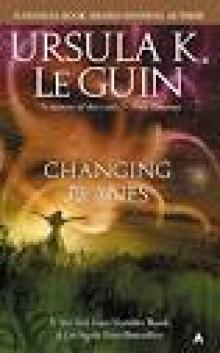 Ursula K. Le Guin
Ursula K. Le Guin Dangerous People
Dangerous People Worlds of Exile and Illusion: Rocannon's World, Planet of Exile, City of Illusions
Worlds of Exile and Illusion: Rocannon's World, Planet of Exile, City of Illusions Three Hainish Novels
Three Hainish Novels The Left Hand Of Darkness (SF Masterworks)
The Left Hand Of Darkness (SF Masterworks) The Unreal and the Real - Vol 1 - Where On Earth
The Unreal and the Real - Vol 1 - Where On Earth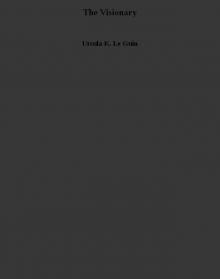 The Visionary
The Visionary The Ones Who Walk Away from Omelas
The Ones Who Walk Away from Omelas The Word for World is Forest
The Word for World is Forest Always Coming Home
Always Coming Home The Unreal and the Real - Vol 2 - Outer Space, Inner Lands
The Unreal and the Real - Vol 2 - Outer Space, Inner Lands Malafrena
Malafrena The Lathe of Heaven
The Lathe of Heaven Five Ways to Forgiveness
Five Ways to Forgiveness The Eye of the Heron
The Eye of the Heron Four Ways to Forgiveness
Four Ways to Forgiveness Powers
Powers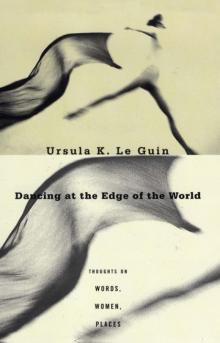 Dancing at the Edge of the World
Dancing at the Edge of the World Very Far Away from Anywhere Else
Very Far Away from Anywhere Else Voices aotws-2
Voices aotws-2 The New Atlantis
The New Atlantis The Unreal and the Real, Selected Stories of Ursula K. Le Guin Volume 1: Where on Earth
The Unreal and the Real, Selected Stories of Ursula K. Le Guin Volume 1: Where on Earth The Telling
The Telling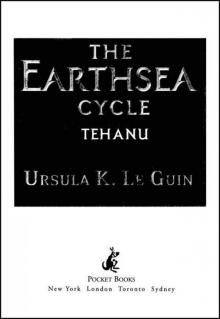 Tehanu (Earthsea Cycle)
Tehanu (Earthsea Cycle) Nine Lives twtq-9
Nine Lives twtq-9 The Birthday of the World and Other Stories
The Birthday of the World and Other Stories The Dispossessed
The Dispossessed Changing Planes
Changing Planes Words Are My Matter
Words Are My Matter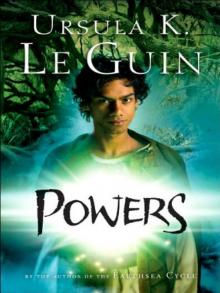 Powers aotws-3
Powers aotws-3 Lavinia
Lavinia The Wind's Twelve Quarters
The Wind's Twelve Quarters Orsinian Tales
Orsinian Tales Gifts aotws-1
Gifts aotws-1 Coming of Age in Karhide
Coming of Age in Karhide The Books of Earthsea: The Complete Illustrated Edition
The Books of Earthsea: The Complete Illustrated Edition The Found and the Lost
The Found and the Lost No Time to Spare
No Time to Spare Voices
Voices The Wild Girls
The Wild Girls Old Music and the Slave Women
Old Music and the Slave Women The Daughter of Odren
The Daughter of Odren A Fisherman of the Inland Sea: Stories
A Fisherman of the Inland Sea: Stories A Wizard of Earthsea (The Earthsea Cycle)
A Wizard of Earthsea (The Earthsea Cycle)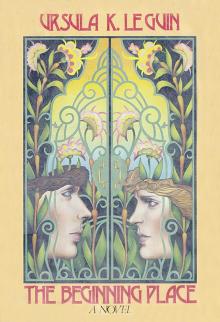 The Beginning Place
The Beginning Place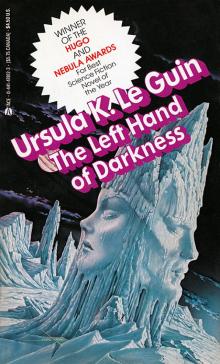 The Left Hand of Darkness
The Left Hand of Darkness The Farthest Shore (Earthsea Cycle)
The Farthest Shore (Earthsea Cycle) The Matter of Seggri botw-2
The Matter of Seggri botw-2